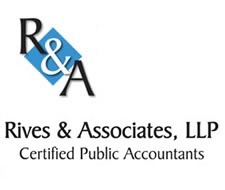
 Special to the Philanthropy Journal
Special to the Philanthropy Journal
By Taylor Dill and Alec Altman
As a land-grant university, NC State is committed to providing students hands-on, highly-engaged learning opportunities AND to providing research that is of direct, practical use to the fields we work in. Philanthropy Journal proudly presents the latest in a series of evidence-based resource articles developed by Dr. Amanda J. Stewart‘s masters level Management of Nonprofit Organizations classes. These articles represent a perfect overlap of engaged learning and practical research.
When you ask the typical person what they think about regarding fraud, they will most likely respond that fraud occurs at large corporations by unethical managers and that it involves theft of cash. The typical person usually does not think of fraud in nonprofits because of the public’s positive perception of them. Because of this and several other reasons, many smaller nonprofits fail to have proper policies in place to adequately mitigate the very real threat of fraud. However, a study by Carr Riggs & Ingram, CPAs and Advisors shows that in 2012, 9% of embezzlements were in the nonprofit sector, and the average loss from these frauds were $548,511, which could be extremely detrimental to smaller nonprofits.[1] While there is no guarantee that fraud can be eliminated completely, nonprofits should focus on implementing a strong system of internal controls to reduce the likelihood of fraud occurring.
 To implement a strong system of internal controls, one must first understand what drives an employee to commit fraud. A common theory used in considering the risk of fraud is the Fraud Risk Triangle, which includes three elements: pressures, opportunities, and rationalizations are defined further below:
To implement a strong system of internal controls, one must first understand what drives an employee to commit fraud. A common theory used in considering the risk of fraud is the Fraud Risk Triangle, which includes three elements: pressures, opportunities, and rationalizations are defined further below:
- Pressure usually occurs when the executive director or board of directors emphasize to lower level employees that goals must be met, no matter the means. Pressure can also be exerted on an employee from external sources, such as increasing personal debt and the inability to provide for their family based on their salary.
- Opportunity to commit fraud typically arises from not having a proper system of internal controls in place. Internal controls are policies and procedures that help mitigate the risks of fraud and error in an organization. Internal controls typically restrict access and use of assets. They can be as simple as having locks on the doors and as complex as requiring multiple authorizations before funds can be dispersed.
- Rationalization is what an employee says to themselves to make themselves believe that what they are doing is okay. Common rationalizations are “everyone else is doing it” or “it’s only going to happen one time.”[2]
Jacob Allen, CPA, is an audit manager specializing in the industry of nonprofits at Rives & Associates, LLP. Two of his responsibilities are to identify fraud risks and the related mitigating internal controls within the organization under audit. Because he works with several smaller nonprofits, his knowledge and expertise were used to offer recommendations for the common deficiencies in internal controls he noticed in smaller nonprofit organizations.[3]
Before discussing the deficiencies common in smaller nonprofits, it is important to consider the specific risks related to nonprofits. Volunteers are a unique threat to nonprofits in that they are not as connected to the mission as many paid employees or executives are. Therefore, they can more easily rationalize stealing from the nonprofit. Secondly, many government and foundation grants require a low percentage of overhead expenses related to revenues (i.e. they are looking for nonprofits that are spending funds on the mission). Because of this, nonprofits may be tempted to either understate their overhead expenses or overstate their revenues. It is easy for management to potentially falsify overhead expenses because of the ability to alter the calculation to obtain more favorable results. In terms of revenues, the easiest line item to falsify is the in-kind donations. This is because most in-kind donations do not have a set dollar value attached to them, and it is left to management’s discretion as to how to value them. This potentially makes it easier for them to overvalue these items.
Common control deficiencies that Mr. Allen noted were as follows:
- Unqualified or an overbearing board: The board is an essential monitoring function on management, and when they lack the necessary qualifications or take on too much responsibility, it could be detrimental to the success of the nonprofit.
- Executives taking on too much responsibility: Executives who take on too much responsibility, or are pressured to meet targets by the board, are more likely to be burnt out and possibly commit fraud.
- Lack of employee development programs: A lack of employee development programs disincentivizes employees to work efficiently, and an unhappy employee can more easily rationalize committing fraud.
- Lack of succession planning: A lack of succession planning indicates that an organization provides little promotional opportunities for its employees, which directly ties to a lack of employee development programs.
- Rubberstamping of executive decisions: Again, the board is a critical monitoring function of management. Their job is not to avoid conflict. They should be asking probing questions to make sure that the executive is making the best possible decisions for the nonprofit and is not committing fraud.
Most of these control deficiencies have a simple fix and would likely lead to a superior system of controls that can effectively mitigate the risk of fraud. Mr. Allen stated that the least expensive, but the most important, control to implement is an effective “tone at the top.”[4] The tone at the top is equivalent to the nonprofit’s work culture and how management and the board emphasize ethics in the organization. Other inexpensive control recommendations Mr. Allen had for smaller nonprofits are as follows:
- Monthly bank reconciliations by supervisors: This is essentially balancing the nonprofit’s check book and helps ensure funds are not stolen.
- Background checks for all paid employees: Nonprofit managers should make sure that its employees are both qualified and ethical to avoid hiring individuals who are more likely to commit fraud.
- More employee development/training programs: Again, this enables the nonprofit to establish a succession plan while also improving overall employee morale.
- Having a knowledgeable board of directors with at least one accounting expert: The board, as a check on executives, should be able to identify potential fraud by asking probing questions or having a clear understanding of the accounting process.
Internal controls provide more benefits than just mitigating the risk of fraud in the organization. Internal controls help reduce audit fees because they allow the auditor to reduce the time it takes to conduct the audit. They also help organizations become more efficient in their operations and reduce the likelihood of errors in their work. However, internal controls are not foolproof. There are common limitations to internal controls, including: collusion, human judgment, management override of the controls in place, and just a simple break down of the controls. Unfortunately, there is essentially no way around these limitations. While there are several steps that nonprofits can take to eliminate these factors internally as described above, there is no way to eliminate each employee’s personal situation. Still though, internal controls are the best way to mitigate the risk of fraud and limit the chance of loss to the nonprofit.
In conclusion, although smaller nonprofits may have to dedicate some funds to implementing these controls, the overall benefits outweigh the cost. Smaller nonprofits will be more protected against fraud and unwanted negative publicity by simply implementing stronger controls. Internal controls go a long way in a nonprofit achieving its mission, and a strong set of internal controls will help the nonprofit maintain success in the long run.
[1] Menard, Lynn L. “Fraud in the Non-Profit Organizations: Schemes & Strategies.” Carr Riggs & Ingram, CPAs and Advisors, 2012. Accessed 8 April 2018.
[2] For more information on the Fraud Triangle: “The Fraud Triangle: Three Conditions that Increase the Chance of Fraud.” Anderson CPA and Advisors, http://anderscpa.com/the-fraud-triangle-three-conditions-that-increase-the-risk-of-fraud/. Accessed 9 April 2018.
[3] Jacob Allen (CPA), Interview by Alec Altman and Taylor Dill, 17 March 2018.
[4] For more information about tone at the top see: “Tone at the Top: How Management Can Prevent Fraud in the Workplace.” Association of Certified Fraud Examiners.” Accessed 10 April 2018.
Alec Altman is a graduate from North Carolina State University with a Master’s degree in accounting. He has an interest in the nonprofit sector and will continue working with nonprofits at his job as an audit associate at Johnson Lambert LLP.
Taylor Dill is a graduate from North Carolina State University with a Master’s degree in accounting. Through her experience with auditing nonprofits at her summer internship with Rives & Associates LLP, she developed an interest in the nonprofit sector and plans to continue working with nonprofits at her job as an audit associate at Cherry Bekaert LLP.





